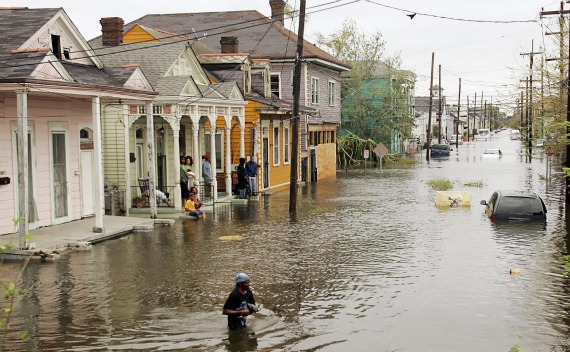Remembering Katrina and Sichuan Amidst Japan’s Crisis
More on:

As I watched the Japan crisis unfold in rapid succession—the earthquake, the tsunami and then the collapsing nuclear reactors at the Daiichi nuclear plant in Fukushima—I was struck by the absolute dignity and unity of the Japanese people. My colleague Sheila Smith has an excellent post on this, so no need for me to repeat.
Instead, I want to raise the issue of context, or the lack thereof.
For much of the past ten days, I have felt as though I was in an alternative reporting reality. Particularly in the early days, the western news media focused almost exclusively on the failures within the Japanese system: the failure of the Tokyo Electric Power Company (TEPCO) to share information; the failure of the Prime Minister to stay on top of the crisis, and the failure of the Japanese people to retain hope and not hoard groceries. There was little to no reporting on the strength and resilience of the people. Yet many voices from Japan suggested this. How did we miss half the story?
Even if the news media couldn’t see the whole picture in the midst of their frenzied reporting, how about some comparisons with other disaster responses?
Does anyone remember the 2005 Hurricane Katrina and its aftermath? Tens of thousands of New Orleans residents simply refused to heed the government’s warning and leave the city before the hurricane hit. After the hurricane, there was no clean water or electricity; television news broadcasts were disrupted, hindering the flow of information; and armed gangs trolled the city looting. Decomposing bodies sometimes lay for days before they were collected. Rebuilding, of course, has been a slow and tortuous process, and more than five years later, sections of the city are still abandoned. Let’s not even discuss the difference between President Bush’s flight over the city and Prime Minister Kan’s roll-up-your-sleeves, on-the-ground approach to crisis management.
China can also help bring some context. The Sichuan earthquake in 2008 is estimated to have cost around 90,000 lives, of which more than 5,000 were children. Of course, we don’t know for sure because the Chinese government refuses to allow the names of the children who died to be released. Moreover, after initially welcoming outside assistance and non-governmental organizations into the area to help with relief work, the government soon sent them all away, afraid of what they might see and report.
In this vein, Chinese Foreign Ministry Spokeswoman Jiang Yu might win the award for greatest irony when she called on Thursday for Japan to be more transparent in its release of information to the public. The irony only increases when three days later, a South Korean state think tank announced that the toxic yellow dust that travels from China to South Korea every spring contains traces of cesium 137, indicating that China likely has a leak in one of its nuclear reactors. Perhaps Jiang Yu can offer some transparency on that front.
Certainly the Japanese government and TEPCO have made mistakes, and undoubtedly, we will learn of more as time goes on. But if we put this devastating disaster into context, their glass house might look pretty good compared to ours.
More on:
 Online Store
Online Store